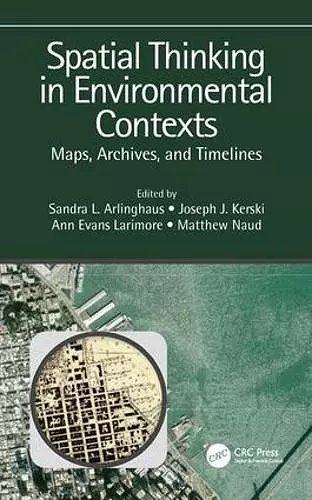Spatial Thinking in Environmental Contexts
Maps, Archives, and Timelines
Joseph J Kerski editor Sandra Lach Arlinghaus editor Ann Evans Larimore editor Matthew Naud editor
Format:Hardback
Publisher:Taylor & Francis Ltd
Published:15th Aug '19
Currently unavailable, and unfortunately no date known when it will be back
This hardback is available in another edition too:
- Paperback£47.99(9781138747319)

Spatial Thinking in Environmental Contexts: Maps, Archives, and Timelines cultivates the spatial thinking "habit of mind" as a critical geographical view of how the world works, including how environmental systems function, and how we can approach and solve environmental problems using maps, archives, and timelines. The work explains why spatial thinking matters as it helps readers to integrate a variety of methods to describe and analyze spatial/temporal events and phenomena in disparate environmental contexts. It weaves together maps, GIS, timelines, and storytelling as important strategies in examining concepts and procedures in analyzing real-world data and relationships. The work thus adds significant value to qualitative and quantitative research in environmental (and related) sciences.
Features
- Written by internationally renowned experts known for taking complex ideas and finding accessible ways to more broadly understand and communicate them.
- Includes real-world studies explaining the merging of disparate data in a sensible manner, understandable across several disciplines.
- Unique approach to spatial thinking involving animated maps, 3D maps, GEOMATs, and story maps to integrate maps, archives, and timelines—first across a single environmental example and then through varied examples.
- Merges spatial and temporal views on a broad range of environmental issues from traditional environmental topics to more unusual ones involving urban studies, medicine, municipal/governmental application, and citizen-scientist topics.
- Provides easy to follow step-by-step instructions to complete tasks; no prior experience in data processing is needed. <
"I very much like the juxtaposition of theory and practice, which proves that these are not opposites but that "there is nothing more applied than a good theory". It mirrors my own approach, where I introduce beginning undergraduate GIS students to the theory of mathematical spaces, from logic to sets, to relations, to functions, etc. in each case becoming more restrictive but also specific...This book improves on my approach by immediately providing easy examples that do not require GIS expertise...The preface is strong and convincing."
~Jochen Albrecht, Hunter College, City University of New York
ISBN: 9781138631854
Dimensions: unknown
Weight: 1400g
248 pages